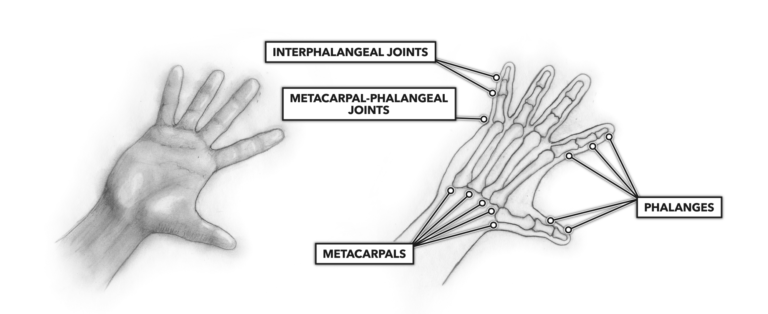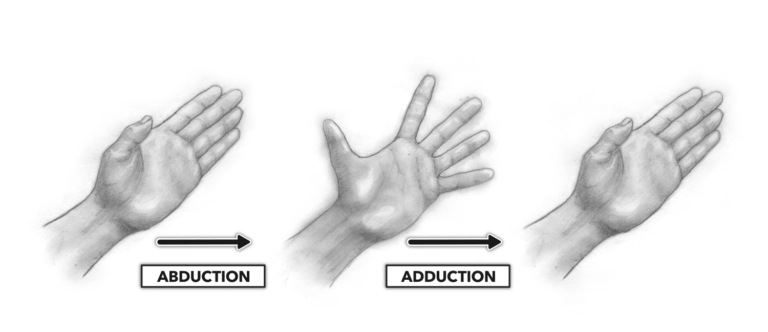The numerous bones, joints, and muscles in the hand produce several movements — flexion, extension, abduction, adduction, opposition, and reposition — and provide for exquisite control of the orientation of the hand and fingers in space (Figure 1). When seeking to understand such movements, we must evaluate the contributions of each joint or set of joints.
At the metacarpal-phalangeal joints, we can see individual or combined abduction and adduction of the fingers (phalanges) (Figure 2).
Also at the metacarpal-phalangeal joints, we can see flexion and extension, as shown on the left side of the image below. If we consider the finger joints beyond the knuckles, they, too, are capable of flexion and extension, as seen on the right side of the image (Figure 3).
The opposition and reposition of the thumb are uniquely human movements. In opposition, the thumb is moved toward the palm to “oppose” the remaining fingers individually or as a group. This movement allows us to pinch, grasp, and hold (wrap the hand around an object). (Figure 4)
Reposition is the opposite of opposition and simply refers to the return of the thumb to anatomical position.
Each individual digit or finger (including the thumb) can adduct, abduct, and oppose in such a way that circumduction can occur. An easy example of this is seen in the action of holding a pencil (opposition) and writing the letter “O” (circumduction).



